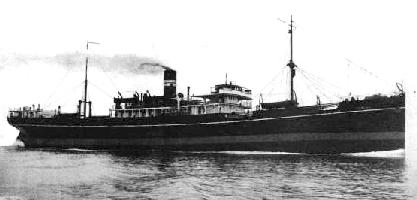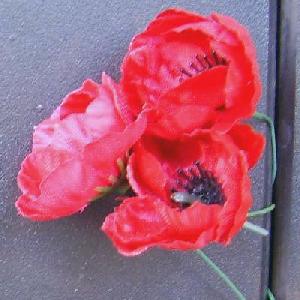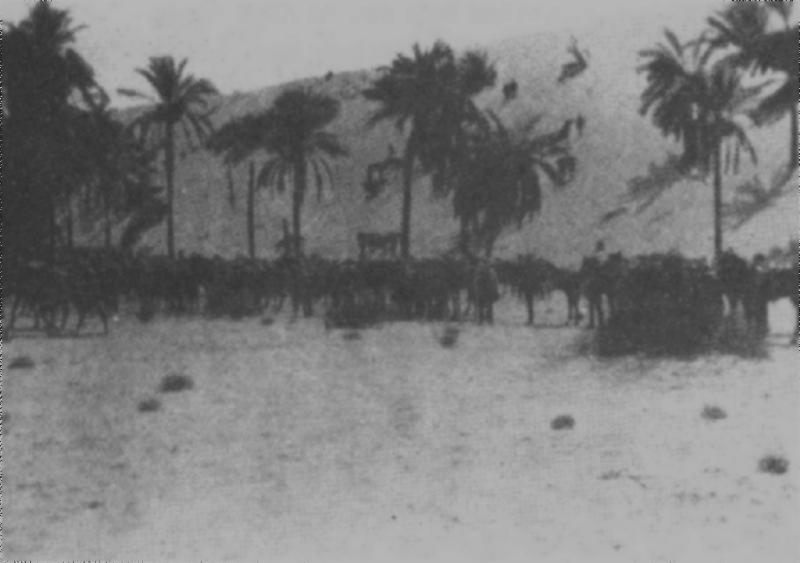The Roll of Honour contains the names of all the men known to have served at one time with the 10th Light Horse Regiment and gave their lives in service of Australia, whether as part of the 10th Light Horse Regiment or another unit.
Robert John ADAMS, Died of Disease, 24 April 1919
James ANDERSON, Killed in Action, 7 August 1915.
William Fleming ANDERSON, Killed in Action, 7 August 1915.
Stanley Gordon ANDREWS, Killed in Action, 10 August 1916.
William ANGLESEY, Died of Wounds, 24 June 1918.
George ARMITAGE, Killed in Action, 19 April 1917.
Percival William ARMSTRONG, Killed in Action, 29 August 1915.
Maurice AYLIFFE, Died of Wounds, 17 October 1918.
Thomas Francis BAILEY, Died of Accident, 6 July 1919.
Duncan Farquhar Grant BAIN, Killed in Action, 7 August 1915.
David BAKER, Died of Wounds, 21 October 1918.
Reginald Michael BANNON, Killed in Action, 27 October 1917.
Thomas BANTOFT, Killed in Action, 28 March 1918.
Harold BARRACLOUGH, Killed in Action, 7 August 1915.
Maurice Joseph BARRY, Died of Wounds, 23 April 1917.
Alfred Septimus BARTLETT, Died of Wounds, 21 April 1917.
Robert Leslie BEARD, Died of Wounds, 14 June 1915.
Herbert Alexander BELL, Killed in Action, 9 August 1916.
Roy BENNETT, Died of Wounds, 11 September 1915.
Arthur John Thomas BIGGS, Died of Wounds, 10 January 1917.
Leslie Thomas BIRD, Killed in Action, 30 September 1918.
James BLADEN, Died of Wounds, 4 May 1917.
William BLAKE, Killed in Action, 7 August 1915.
John Noel BONNEY, Died of Wounds, 18 October 1918.
Horace BOWER, Killed in Action, 7 August 1915.
Edgar Vernon BRADY, Killed in Action, 7 August 1915.
Alfred Blake BREMNER, Died of Wounds, 3 June 1918.
Hubert Howden BROCKMAN, Killed in Action, 7 August 1915.
Sydney BROOKS, Died of Wounds, 15 October 1918.
Edward John BROWN, Died of Wounds, 28 October 1918.
John BROWN, Died of Wounds, 1 June 1915, and subsequently buried at sea.
William Thomas BROWN, Died of Wounds, 31 March 1918.
Thomas BUCKINGHAM, Died of Wounds, 10 August 1915.
John Cyril BUGDEN, Died of Wounds, 15 June 1916.
Henri Louis BULAND, Died of Wounds, 10 February 1919.
Frederick John BUNCE, Killed in Action, 7 August 1915.
Thomas Francis BURGES, Killed in Action, 7 August 1915.
Arthur Lowerly BURN, Killed in Action, 29 August 1915.
Alban John BURTON, Died of Wounds, 9 August 1918.
Albert James BUTLER, Killed in Action, 7 August 1915.
William BYRON, Died of Wounds, 2 June 1919.
James Percival CAMERON, Killed in Action, 7 August 1915.
Harold de Causey CAPORN, Killed in Action, 15 October 1915.
Allen John CHARLESTON, Killed in Action, 19 April 1917.
Norman CHEETHAM, Killed in Action, 31 July 1917.
Douglas Roy CHIDGZEY, Killed in Action, 30 April 1918.
Henry Thomas CHIPPER, Killed in Action, 7 August 1915.
Lindsay Lewis Sterling CHIPPER, Killed in Action, 7 August 1915.
Ross Richard Vivian CHIPPER, Killed in Action, 7 August 1915.
Henry CHRISTIE, Killed in Action, 29 August 1915.
John Henry CLAYTON, Died of Wounds, 30 August 1915.
Albert George COBB, Killed in Action, 7 August 1915.
Louden Park COCHRANE, Killed in Action, 8 November 1917.
George COCKBURN, Died of Accident, 8 July 1917.
George Edwin COLK, Died of Wounds, 31 August 1915.
Herbert Alfred COLLINS, Killed in Action, 7 August 1915.
Thomas COMBLEY, Killed in Action, 7 August 1915.
Neil John CONWAY, Killed in Action, 3 May 1918.
Allan James COOKE, Died of Wounds, 9 August 1916.
William Michael COONAN, Killed in Action, 29 August 1915.
Harry CORKER, Died of Wounds, 22 August 1915, and subsequently buried at sea.
Raymond Talbot COWAN, Died of Wounds, 24 October 1918.
Alfred COX, Died of Wounds, 25 July 1915.
William James COX, Died of Wounds, 13 October 1918.
Arthur Joseph Dennis CRONIN, Killed in Action, 29 August 1915.
Archibald CROWE, Died of Wounds, 31 August 1915.
John James CRUITE, Died of Wounds, 6 August 1915.
Richard Edward CUMMING, Killed in Action, 7 August 1915.
Allan CUMMINGS, Killed in Action, 15 June 1915.
Joseph Percy CUTLER, Died of Wounds, 4 October 1917.
Frank DACK, Killed in Action, 30 August 1915.
George DALLING, Killed in Action, 29 August 1915.
Rowland Dudlyn DAVIS, Killed in Action, 7 August 1915.
James Arthur DEAN, Died of Wounds, 3 November 1916.
George Parkman DEBNAM, Died of Wounds, 25 September 1915, and subsequently buried at sea.
Leslie Sylvester DELANEY, Killed in Action, 30 March 1918 .
George Ernest DeMOLE, Killed in Action, 7 August 1915.
Reginald Garry DEMPSTER, Killed in Action, 7 August 1915.
James DICKERSON, Died of Wounds, 30 August 1915, and subsequently buried at sea.
Murray John DICKSON, Killed in Action, 29 August 1915.
Ralph Ernest DISHER, Killed in Action, 19 April 1917.
Geoffrey Hardwick DODSON, Killed in Action, 2 May 1918.
David DORAN, Killed in Action, 4 May 1917.
Amos Leonard DOUST, Killed in Action, 7 August 1915.
William Thomas DOWDELL, Killed in Action, 12 October 1917.
Hubert Howden DRAKE-BROCKMAN, Killed in Action, 7 August 1915.
Denis DU VAL, Killed in Action, 7 August 1915.
Richard James DUNSTAN, Died of Wounds, 10 August 1918.
Michael DWYER, Killed in Action, 31 July 1918.
Norman Charles DYER, Killed in Action, 7 August 1915.
Henry John EATON, Killed in Action, 17 July 1917.
Ronald Swan EDGAR, Killed in Action, 19 April 1917.
Herbert Thomas Noel EDWARDS, Killed in Action, 19 April 1917.
Thomas William EDWARDS, Killed in Action, 27 September 1918.
Peter EGERTON-WARBURTON, Died of Wounds, 9 August 1915.
Albert Henry ELLIS, Killed in Action, 3 May 1918.
William Williamson EUSTACE, Died of Wounds, 7 August 1915.
John Charles EYRE, Killed in Action, 7 August 1915.
Joseph Thomas FACEY, Killed in Action, 14 September 1915.
Albert Edward FARE, Killed in Action, 4 December 1916.
Walter FELSTEAD, Died of Wounds, 20 October 1915, and subsequently buried at sea.
Basil Middleton FENWICK, Killed in Action, 7 August 1915.
Sutton Henry FERRIER, Died of Wounds, 9 September 1915, and subsequently buried at sea.
Hobart Douglas FIRNS, Killed in Action, 29 August 1915.
Jack FLUX, Killed in Action, 7 August 1915.
Alan Robert FORBES, Died of Wounds, 11 October 1918.
Richard Andrew FORBES, Killed in Action, 7 August 1915.
Henry Clinton FOSS, Killed in Action, 3 May 1917.
Frederick Leopold FRASER, Killed in Action, 29 August 1915.
James Malcolm FROST, Killed in Action, 5 August 1916.
Henry Phillip FRY, Died of Wounds, 29 August 1915.
Charles Franklin FUHRMANN, Died of Wounds, 13 August 1918.
Richard Frank FUNNELL, Died of Accident, 26 August 1917.
Alexander Howard Parker FYFE, Killed in Action, 26 September 1917.
Alexander GANNAWAY, Died of Wounds, 25 August 1915.
Henry Charles GARDINER, Killed in Action, 21 October 1917.
William GILBERT, Killed in Action, 9 January 1917.
Hubert Evelyn GILLAM, Died of Wounds, 29 August 1915.
Sydney Davenport GILLAM, Died of Wounds, 29 August 1915.
Henry Walker GODRICH, Died of Wounds, 11 April 1918.
John Alexander GOLLAN, Died of Wounds, 30 August 1915.
Richard Baxter GOULD, Died of Wounds, 2 April 1918 .
Allan George GOYDER, Died of Wounds, 11 May 1918.
Gerald Francis GRAY, Killed in Action, 25 May 1915.
Lewis John GREAY, Killed in Action, 16 September 1916.
William Ernest GREEDY, Killed in Action, 17 August 1915.
Edward Owen GREEN, Died of Accident, 29 November 1918.
Alexander Richard GUTHRIE, Died of Wounds, 6 August 1915.
William HAHN, Killed in Action, 7 August 1915.
Charles Arthur Jocelyn HALL, Died of Wounds, 29 August 1915.
George Frederick HALL, Killed in Action, 19 April 1917.
Herbert HALLETT, Killed in Action, 29 August 1915.
John HALLETT, Killed in Action, 29 August 1915.
Herbert Bowen HAMLIN, Died of Wounds, 30 May 1919.
Arthur HANCOCK, Killed in Action, 7 August 1915.
Gresley HARPER, Killed in Action, 7 August 1915.
Wilfred Lukin HARPER, Killed in Action, 7 August 1915.
Albert Edward HARRISON, Killed in Action, 30 March 1918.
John James Irwin HARRISON, Died of Wounds, 15 August 1916.
Rorbert Edward HARRISON, Died of Wounds, 22 July 1915.
Thomas Charles HART, Died of Wounds, 25 September 1915.
Geoffrey Garnet HASFALL, Killed in Action, 29 August 1915.
Oscar Donald Humfray HASSELL, Killed in Action, 7 August 1915.
Eric Harold HAWTIN, Killed in Action, 10 December 1916.
William Thomas HAYES, Died of Wounds, 12 April 1917.
Richard HEINRICH, Killed in Action, 13 October 1917.
Thomas James HELLER, Killed in Action, 7 August 1915.
Walter Harrold HERFORD, Died of Wounds, 4 October 1917.
Frederick Edward HICKS, Killed in Action, 9 January 1917.
Alexander McPherson HILL, Killed in Action, 29 August 1915.
Henry HILL, Killed in Action, 7 August 1915.
Henry George HILL, Died of Wounds, 11 August 1915, and subsequently buried at sea.
Stewart Roy Luxmoore HOCKIN, Died of Wounds, 25 July 1915, and subsequently buried at sea.
Thomas Edwin HOLLAND, Died of Wounds, 31 August 1915.
Willy HOLLINGS, Died of Accident, 26 November 1918.
Douglas Walter HOPKINS, Killed in Action, 30 May 1915.
Christopher Leslie HOUGH, Killed in Action, 18 August 1916.
Francis George HOWELL, Died of Wounds, 22 December 1917.
Geoffrey Castell HOWELL, Killed in Action, 7 August 1915.
Raymond HOWELL, Killed in Action, 7 August 1915.
William HUGGINS, Died of Wounds, 13 October 1918.
Clarence Edward HUTTON, Killed in Action, 17 August 1915.
Ernest HYDE, Died of Wounds, 19 October 1918.
David Alexander JACKSON, Killed in Action, 7 August 1915.
Charles David Frederick JONES, Killed in Action, 23 December 1916.
Edward KENNEDY, Killed in Action, 19 April 1917.
Frederick William KIRSCH, Killed in Action, 7 August 1915.
Louis Alfred KLOPPER, Killed in Action, 7 August 1915.
Walter Douglas KNOWLES, Killed in Action, 9 January 1917.
Henry Claude LADYMAN, Died of Wounds, 10 January 1917.
William Henry LAILEY, Killed in Action, 7 August 1915.
Thomas Victor LAKELAND, Killed in Action, 10 September 1915.
Joseph LAMB, Died of Wounds, 1 February 1917.
Roland Oscar LANE, Died of Wounds, 21 November 1915.
Harry LANGDON, Killed in Action, 20 September 1917.
George Arthur LEAKE, Killed in Action, 29 August 1915.
Francis George LEE, Died of Wounds, 20 August 1918.
Reginald LEGGE, Died of Wounds, 18 January 1917.
Urban Rowland LEVERMAN, Died of Wounds, 18 October 1918.
Edwin Thomas LEWIS, Killed in Action, 1 June 1915.
John Percival LEWIS, Killed in Action, 7 August 1915.
Arthur Newton LINTOTT, Died of Wounds, 9 August 1916.
Dudley LUKIN, Killed in Action, 7 August 1915.
Colin Hendric MacBEAN, Killed in Action, 29 August 1915.
William Cuthbert MacKENZIE, Killed in Action, 7 August 1915.
Duncan Mark MacLAREN, Died of Wounds, 6 August 1916.
John Abington MacLEOD, Died of Wounds, 9 May 1917.
Keith Percy MacNISH, Killed in Action, 29 August 1915.
William Henry MASON, Died of Wounds, 9 August 1915.
John MATHISON, Killed in Action, 18 March 1919.
Reginald Edward MAYWOOD, Died of Wounds, 10 May 1918.
Ernest McALIECE, Killed in Action, 7 August 1915.
William John McCALL, Killed in Action, 29 August 1915.
Ivanhoe McCARTHY, Killed in Action, 31 October 1917.
Alfred John McCLUSKY, Killed in Action, 7 August 1915.
Claude Rutherford McCORMICK, Killed in Action, 31 July 1918.
George McCURDY, Killed in Action, 9 January 1917.
John Blacklock McJANNET, Killed in Action, 7 August 1915.
Donald McLEAN, Killed in Action, 29 August 1915.
Donald Stanley McLEAN, Killed in Action, 7 August 1915.
Francis McMAHON, Killed in Action, 29 August 1915.
Robert Thompson McMASTER, Killed in Action, 7 August 1915.
Richard Andrew McNAMARA, Killed in Action, 19 April 1917.
Henry George McNEILL, Killed in Action, 7 August 1915.
Alexander McPHEE, Died of Wounds, 9 February 1916.
Gordon McRAE, Killed in Action, 7 August 1915.
Clifford John McWHIRTER, Died of Wounds, 6 October 1918.
Samuel George McWHIRTER, Killed in Action, 29 August 1915.
James Thomas MINITER, Died of Wounds, 16 October 1918.
Percy Sutherland MOFFLIN, Killed in Action, 16 June 1915.
Harold MOORE, Killed in Action, 3 May 1917.
Reginald Johnstone MOORE, Killed in Action, 7 August 1915.
Charles Abraham John MOULTON, Died of Wounds, 19 August 1916.
Cecil Francis MUMBY, Died of Accident, 27 August 1918.
George NEILSON, Killed in Action, 13 January 1918.
John Johnston NELSON, Died of Wounds, 3 February 1916.
Raymond Richard John NORRISH, Died of Wounds, 31 December 1917.
William Reginald Eustace NORTHEY, Killed in Action, 7 August 1915.
George Henry OLIVE, Killed in Action, 3 May 1917.
Lester Osborne PADMAN, Died of Accident, 15 October 1917.
Albert Edward Seymorne PARSONS, Killed in Action, 3 May 1917.
Leonard Parker PAYNE, Killed in Action, 7 August 1915.
Clyde Bowman PEARCE, Killed in Action, 10 June 1917.
Arthur Albert PEARSON, Killed in Action, 7 August 1915.
Ernest PENNY, Killed in Action, 7 August 1915.
Ernest PENTZIN, Killed in Action, 17 September 1916.
Walter Samuel PETTIT, Died of Wounds, 5 February 1917.
Charles Herbert PFORDTEN, Died of Wounds, 12 August 1916.
Vernon Frederick PIESSE, Killed in Action, 7 August 1915.
Arthur Thomas PITTS, Killed in Action, 7 August 1915.
John Morton PLAYNE, Killed in Action, 7 August 1915.
Edward POOLE, Killed in Action, 8 October 1917.
Herbert POPE, Killed in Action, 7 August 1915.
Benjamin POUNTNEY, Killed in Action, 23 December 1916.
William Herbert PRATT, Killed in Action, 19 April 1917.
Henry Albert Franklin PRICE, Died of Wounds, 20 April 1917.
James Allan PRIDE, Died of Wounds, 7 February 1919.
Alexander RAE, Died of Wounds, 7 August 1915.
Arthur Roland RALPH, Died of Wounds, 13 May 1918.
Frank Albert RAWLINGS, Killed in Action, 7 August 1915.
John REGAN, Died of Wounds, 7 August 1915.
Reginald Malcolm REID, Killed in Action, 30 May 1915.
Bert REYNOLDS, Killed in Action, 6 November 1917.
George Wallace RICHARDSON, Died of Wounds, 7 August 1915.
Charles Archibald ROBINSON, Killed in Action, 7 August 1915.
James Jacob RODSTED, Died of Wounds, 6 November 1917.
Jack ROLLO, Died of Accident, 14 June 1919.
George Thomas ROSE, Killed in Action, 29 August 1915.
Leopold James Cecil ROSKAMS, Killed in Action, 7 August 1915.
Willian Allardice ROSS, Killed in Action, 7 August 1915.
Andrew Percival ROWAN, Killed in Action, 7 August 1915.
Harold RUSH, Killed in Action, 7 August 1915.
Walter Jordan RUSK, Killed in Action, 29 August 1915.
Heinrich Carl Ludwig RUWOLDT, Killed in Action, 29 August 1915.
Edward RYAN, Killed in Action, 29 August 1915.
Thomas John RYAN, Died of Wounds, 7 August 1916.
George Edward SANDERSON, Killed in Action, 30 March 1918.
George Frederick Henry SANDY, Killed in Action, 7 August 1915.
Ernest Charles Gordon SCOTT, Died of Wounds, 19 July 1915, and subsequently buried at sea.
John Andrew SCOTT, Killed in Action, 7 August 1915.
John Burns SCOTT, Killed in Action, 8 October 1915.
Frank William SCRIVENS, Died of Wounds, 20 August 1915.
Percy SEAMAN, Killed in Action, 29 August 1915.
William Alfred SHADBOLT, Died of Wounds, 1 September 1916 .
Clarence SHEPHERD, Killed in Action, 7 August 1915.
Horace Richard SIMMONS, Killed in Action, 18 October 1917.
Cecil Henry SINCLAIR, Killed in Action, 9 January 1917.
Cyril Gordon SMITH, Died of Wounds, 11 November 1917.
Archibald SMYTH, Died of Wounds, 2 January 1919.
Willian John SNUDDEN, Killed in Action, 7 August 1915.
Robert Ernest SPENCER, Died of Wounds, 31 August 1915.
John SPRINGALL, Killed in Action, 7 August 1915.
Lewis Harrington STAFFORD, Killed in Action, 8 October 1917.
Henry John STOW, Killed in Action, 4 May 1917.
Patrick Francis SULLIVAN, Killed in Action, 3 May 1918.
Clarence Edward SUTTON, Killed in Action, 7 August 1915.
Archibald Lee SWEETING, Died of Wounds, 17 August 1916.
Lawrence Michael TAYLOR, Died of Wounds, 21 April 1917.
Victor Sewell TAYLOR, Killed in Action, 23 December 1916.
William Gill THOMAS, Died of Wounds, 9 November 1918.
Thomas THOMPSON, Killed in Action, 7 August 1915.
John James THORNETT, Killed in Action, 29 August 1915.
Frank Eric THROSSELL, Killed in Action, 19 April 1917.
Frank TIMMS, Killed in Action, 10 November 1917.
Owen Stanley TIMMS, Killed in Action, 7 August 1915.
Thomas John TODD, Died of Wounds, 23 January 1919.
Cyril Augustus TONKIN, Died of Wounds, 21 February 1919 .
Frederick William TREEBY, Killed in Action, 3 May 1918.
Wilford Roy TRENAMAN, Killed in Action, 30 March 1918.
Alexander Phipps TURNBULL, Killed in Action, 7 August 1915.
Leonard Woodward TURNER, Died of Wounds, 27 July 1915.
George VELPMAN, Killed in Action, 6 February 1917.
Leyshon VILLIS, Killed in Action, 7 August 1915.
Donovan Henry Roy VIVEASH, Died of Wounds, 28 September 1918.
Albert Victor WALLIS, Killed in Action, 3 May 1918.
Ernest Joseph WALTON, Killed in Action, 29 August 1915.
Keith Everard WATT, Killed in Action, 11 July 1915.
Walter Charles WEST, Died of Wounds, 29 September 1915.
Frederick Harold WESTON, Killed in Action, 7 August 1915.
Edwin James WHITE, Killed in Action, 7 August 1915.
Lawrence Hamill WHITE, Died of Wounds, 14 October 1916.
Irwin Munro WHITFIELD, Killed in Action, 3 May 1918.
Roy Parkin WIGELSWORTH, Died of Wounds, 12 October 1918.
James Thomas WILKERSON, Killed in Action, 7 August 1915.
David WILLIAMS, Killed in Action, 14 June 1917.
Philip Harding WILLIAMS, Killed in Action, 31 August 1916.
Royce WOODHEAD, Killed in Action, 11 April 1918.
Lest We Forget











